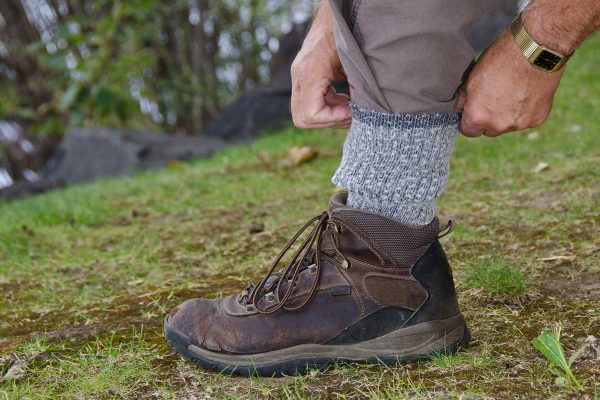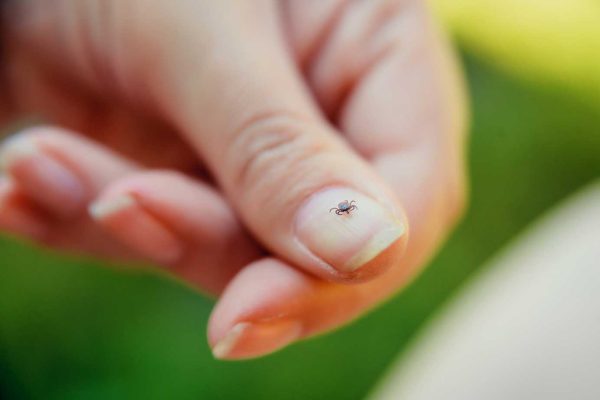 As the picturesque landscape and abundant wilderness of Maine come to life after the winter months, outdoor enthusiasts like me get prepared for a season of exploring. However, amidst the excitement of adventures in the woods and along the shores of Maine’s pristine lakes lies a silent threat: ticks.
As the picturesque landscape and abundant wilderness of Maine come to life after the winter months, outdoor enthusiasts like me get prepared for a season of exploring. However, amidst the excitement of adventures in the woods and along the shores of Maine’s pristine lakes lies a silent threat: ticks.
These tiny arachnids–which are becoming more prevalent due to climate change–can transmit a range of diseases, including Lyme disease, Babesiosis, and Anaplasmosis. Preparing yourself for encounters with ticks is crucial before venturing out for a hike or even a leisurely walk along a trail. Below, I’ve shared some tips for safeguarding against ticks and preventive measures that will keep you and your loved ones safe.
Prevalence of Tick-borne Diseases
Ticks are prevalent in Maine, with the state witnessing an increased number of Lyme disease cases year after year. Lyme disease, caused by the bacterium Borrelia burgdorferi, can lead to severe health complications if left untreated for both humans and pets. Additionally, other tick-borne illnesses, such as Babesiosis and Anaplasmosis, have also been reported in the region. The prevalence of these diseases underscores the importance of tick protection.
Health Risks and Consequences
Tick-borne diseases can have a profound impact on an individual’s health and well-being. Lyme disease, in particular, can cause symptoms such as fatigue, joint pain, fever, and neurological problems. If not diagnosed and treated early, it can lead to chronic health issues, including arthritis, cardiac problems, and neurological impairments. By protecting yourself from ticks, you can significantly reduce the risk of contracting these debilitating diseases.
If you find a tick, you can send it to the UMaine tick lab for identification.
Tick Prevention Measures
Clothing and Repellents: Wearing long-sleeved shirts, long pants, and closed-toe shoes can create a physical barrier against ticks. Tucking pants into socks and wearing light-colored clothing can also help spot ticks more easily. Additionally, applying Environmental Protection Agency (EPA)-approved insect repellents containing DEET or picaridin can deter ticks from biting.
Conducting Tick Checks: After spending time outdoors, thoroughly check your body for ticks, paying close attention to hidden areas such as armpits, groin, and scalp. Promptly removing any attached ticks reduces the risk of disease transmission.
Tick Control for Pets: Protecting pets from ticks is equally crucial, as they can bring ticks into the home. Make sure to give your favorite furry friend a good brush with a comb or with your hand before entering your home after an outing in the woods. Consult with your veterinarian to see what other solutions exist.
Raising Awareness
Educating the community about the dangers of ticks and the importance of prevention is vital. Local health departments, schools, and organizations like the Natural Resources Council of Maine can play a significant role in disseminating information about tick-borne diseases, prevention strategies, and the signs and symptoms of illnesses.
By taking preventive measures such as wearing protective clothing, using repellents, conducting thorough tick checks, and maintaining a tick-free environment, individuals can significantly reduce their risk of tick-borne illnesses.
The risk of Lyme disease from ticks has increased due to climate change. Maine’s shorter and milder winters, coupled with longer warm seasons, generate more mosquitos and ticks, and the illnesses they carry. By joining with NRCM to take action reducing climate pollution and transitioning to clean energy we can help to address these impacts.
Additionally, raising awareness about ticks and the associated diseases is crucial for fostering a culture of vigilance and protection. With proactive efforts, Maine residents and visitors can continue to enjoy the state’s natural beauty while safeguarding their health and well-being.
—by Byron Glaus, NRCM Rising Leadership Team member












Leave a Reply